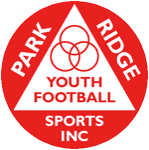Should your child play Flag or Tackle Football?
These days, there is a host of organized sports offering a lot of opportunities to a child. There is a long list of such sports including soccer, golf, karate, and many more in which kids can take part. Despite the number of choices, some kids are fond of playing football. If your child is interested in gridiron football, you have to sort out whether he should play flag or tackle football. Take a deep breath, do not freak out, and maybe consider flag football instead, says Kurt Warner, a hall of fame quarterback. For Warner, the better option is flag football as it is a good way to show kids the basics of the sport, without being knocked down and sustaining potentially dangerous brain injuries.
Tackle Football: The Basics:
Pop Warner Football is a youth sports organization. The children of age 5 to 16 can take part in the Pop Warner program every year. Its main features pertain to age and weight restrictions. Every member of a team has to play a minimum number of games. Its age and weight restrictions rules are liked by parents because it ensures the competition amongst the same age groups and sizes. There are some rules of the youth football program and professional football with a few exceptions. For instance, there are some minor differences in respect of shorter field length (80 yards as opposed to 100) and quarter lengths (8 to 13 minutes as opposed to 15).
Tackle Football: Benefits and Dangers:
A child playing tackle football has more prospects of playing football and professional or collegiate levels. According to one estimate, about 60 to 70 percent of the National Football League players started their initial careers playing tackle football under the Pop Warner program. Though there are a few certain benefits, playing tackle football at a young age poses some hazards too. There remain chances of injury despite wearing protective equipment. Children who play these sports receive repeated head-to-head blows. Subsequently, they might be at risk of suffering cognitive deficits and behavioral issues.
Flag Football-The basics:
Flag Football was created in a bid to facilitate the football players with a similar game as the tackle version with a few modifications devoid of physical contact. During flag football, each player wears around his or her waist with two or four flags hanging from it. In flag football, flags come in a variety of colors and designs. Some belts have flags that attach with plastic fasteners while others have the flags permanently attached so when a flag is pulled the entire belt falls off. Interestingly, flag football players try to tear a flag from another player’s belt rather than tackling a ball-carrier. Having done it, the ball is again placed wherever the ball-carrier was at the time of the tackle. Whereupon, the next down is played. Based on league systems, the rules and regulations are distinct.
Flag Football: Benefits and Dangers
Flag football can allow you to play sports without the concerns of full-contact football. Playing flag football will improve physical health. It helps your cardio. This is also beneficial for children who play it as a hobby rather than making it their career goals. Consequently, they find it a source of fun and meeting new friends. On the other hand, it has a few disadvantages. Flag football can create bad habits for those children who intend the transition to tackle football as a prospective career in the long-run.
Conclusion:
The majority of the parents want their children to play flag football because of its nature of non-contact sports. There is a transformation as regards the increasing trend of Flag football from tackle football. Besides, shifting of the move of the investment to the youth flag and the training of watches as kids approach high school likely would reap demonstrable results. Thus, flag football seems to have surpassed tackle football as the most commonly played form of the game among children ages 6 to 12 (according to the annual survey data by the sports and Fitness Industry Association.
